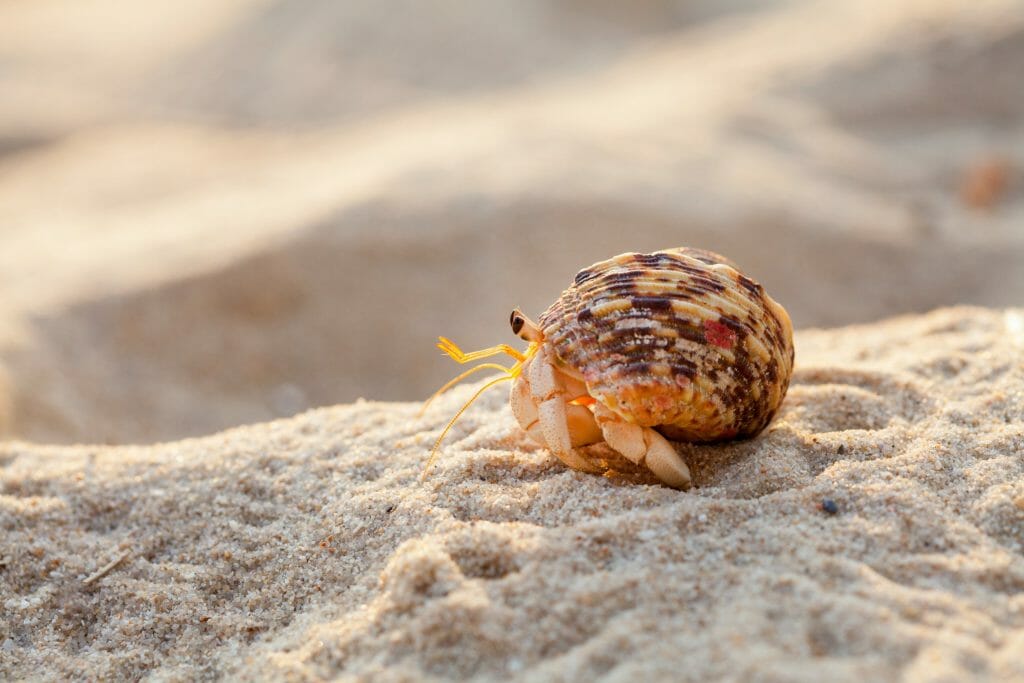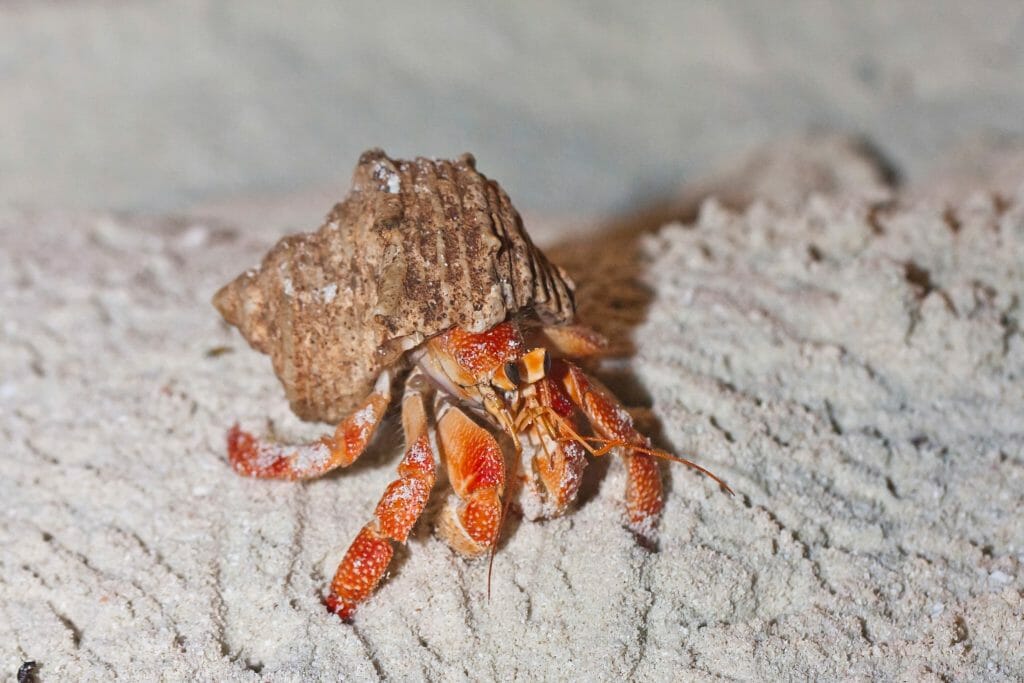Do Hermit Crabs Need Heat: Facts and Tips in Maintaining Their Temperature
Some hermit crabs may do well in colder temperatures, while others may not fare as well and may die. But, ultimately, it’s up to the hermit crab to decide how warm they need to be, and you should never try to force the issue.

If unsure about the ideal temperature for your hermit crabs, check the enclosure temperature regularly and adjust as needed.
Table of Contents
Hermit Crab Temperature
Ideal Temperature for Hermit Crabs
Hermit crabs’ ideal temperature range is around 65-85 degrees Fahrenheit. If your home is too cold for them, you can buy them an indoor heat pad or use a heating lamp to elevate their habitat temperature by 5-10 degrees F.
Additionally, ensure no drafts are in their enclosure and place the heat source near the entrance so they can leave quickly if necessary. If your home is too warm for hermit crabs, you can move them into a more relaxed environment by placing them in a plastic container filled with moist substrate. Hermit crabs will hibernate in colder temperatures but should be moved into a warm environment if it falls below 65 degrees F.
Hermit Crabs in the Cold
Hermit crabs need heat in the winter. Most hermit crabs will not die from the cold, but it is best to keep them in a warm environment if possible. If you can’t provide a warm environment, your crab may need to be moved to a warmer location. Keep an eye on your hermit crab and ensure they keep warm by walking around often or using heating pads/bulbs during the night.
Checking Your Hermit Crab’s Enclosure Temperature
Ensure you keep their enclosure temperature at the correct level by checking the thermometer often. The ideal temperature for hermit crabs is around 78 degrees Fahrenheit, but they can tolerate temperatures up to 85 degrees F if needed.
Adjust your heating or cooling system as needed to keep the enclosure temperature consistent. Place the thermometer in the water at least two inches away from the crab and wait five minutes before reading the temperature.
Ways to Keep Hermit Crabs Warm
It’s common to worry about hermit crabs when it’s cold outside, but the truth is they need plenty of exercise to stay warm. Make sure their enclosure has several openings for them to explore and use different ways to keep hermit crabs warm without using heaters. Some tips include providing them with floating moss or aquatic plants, hiding them in a safe place, and keeping the space they’re living in warm and humid.
If you choose to use heaters, be sure only to use low-wattage devices and avoid direct sunlight exposure where possible. Keeping hermit crabs warm during colder months isn’t always easy, but with a little effort and clever planning, you’ll be good to go!
Heat Lamp
Place a heat lamp near the crab’s tank to mimic the warmth of their natural environment. Ensure the lamp is placed away from any drafty areas or electrical wires to keep them safe. Replace the light bulb every six months to ensure consistent warmth and avoid overheating your crab. If your crab starts getting too warm, it could indicate health problems, so remove them immediately!
Hand Warmers
Keeping hand warmers around the tank is a great way to ensure hermit crabs have everything they need during cold weather. You can keep a few near the water’s edge where the hermit crabs can easily reach them, place hand warmers in the hermit crab’s hiding place, and put them in with their food.
Moving Them to a Warmer Area
Ensure the area is warm but not too hot – hermit crabs cannot tolerate extreme heat. You should also keep an eye on them and take appropriate action if they get stressed out. Also, ensure they have enough food and water in their new location.
Running a Humidifier
A hermit crab needs humidity to stay healthy. A humidifier can help provide this necessary environment and is also an excellent way to keep them cool during summer. Ensure the humidifier is placed where the crabs can get access to it quickly. Place some fresh plants in the tank (if possible) to add humidity.
Insulating the Enclosure
To keep your hermit crabs warm all winter, it’s essential to insulate their enclosure correctly. For example, you can use fiberglass or cotton batting to fill gaps and seal them with a coat of paint or varnish. Alternatively, you could place the enclosure in a warm area and leave it there to keep them warm all winter! Please make sure the material is thick enough to keep the crabs warm without being too hot or hindered in their movement.
Adding More Substrate

If you still have problems with your hermit crab not feeling warm, it might be time to add more substrate. This could include wood chips, coconut husk, or dried leaves – whatever is available in your area. Ensure the substrate is damp but not wet so it will heat up quickly. If this doesn’t work, try using a heated enclosure or buying a pre-made one.
Signs of Hermit Crabs Overheating
Overheating can kill hermit crabs, so be sure to keep them in a temperature range that is comfortable for them. If you notice overheating signs and don’t take action, hermit crabs can die. So be sure to keep an eye on them and take appropriate measures if necessary!
Inactivity and Loss of Shell Color
Hermit crabs are active creatures that need plenty of room to move around and explore. If you notice your hermit crab is inactive or moving slowly, it might be time to add heat or water to its enclosure/tank. If they start losing color in their shell, they may be overheating and should be given a break until the temperature returns to normal.
Excessive drooling
This might indicate that they are dehydrated, which can happen due to being kept indoors in hot weather conditions.
Leaving the Shell
Hermits can also become active when feeling hot, as they want to avoid being trapped in their shells. If you feel something isn’t right with your crabs’ health, always consult a veterinarian before doing anything drastic.
Discharge of Brown Liquid
If you’re seeing brown liquid from your crab’s shell, it is time to get them some help. This discharge can result from a few things – overheating, low humidity levels, or stress. Remove your crab from the heat and give them fresh water and food to eat. Monitor their condition regularly and, if needed, take them to a vet or animal rescue center. If you see this discharge consistently, it is time to get your crab some professional assistance as soon as possible.